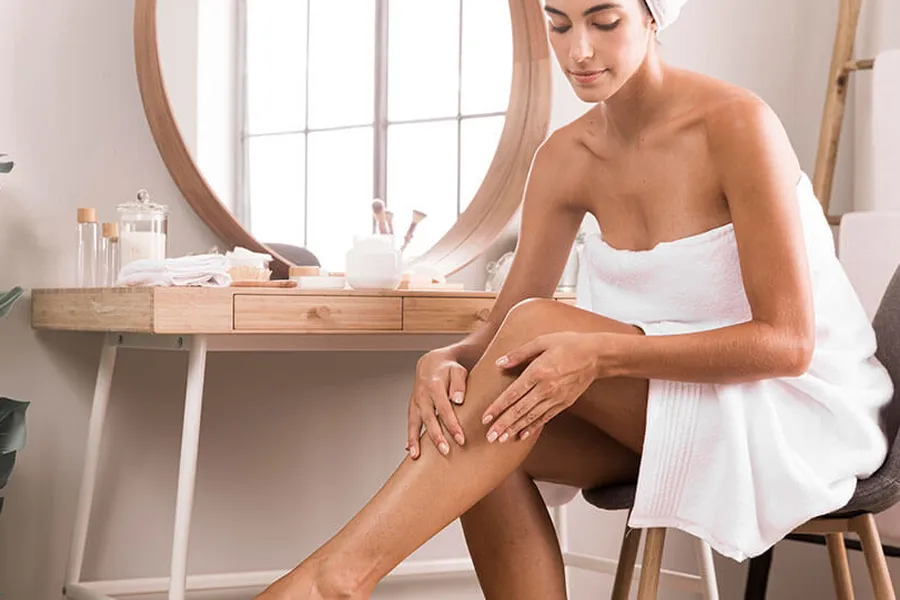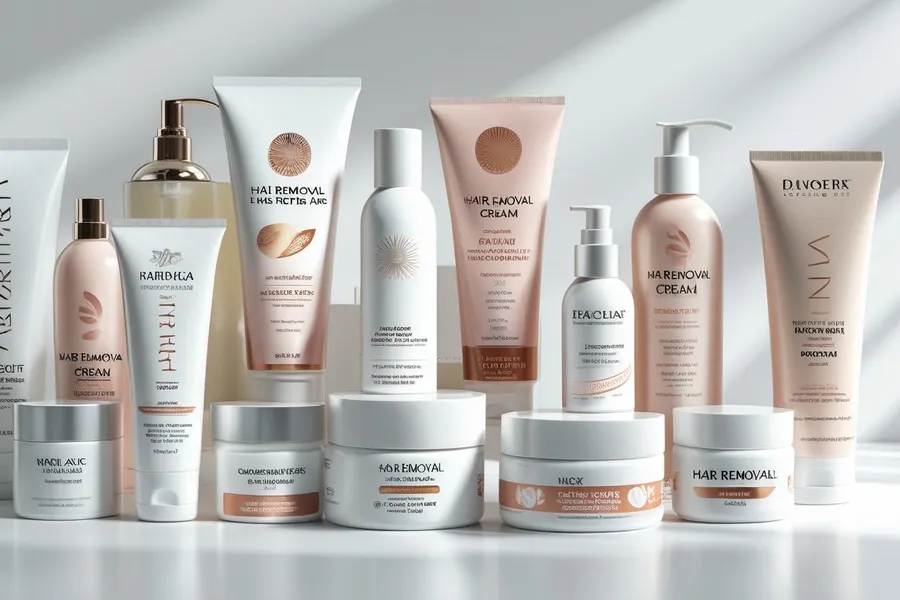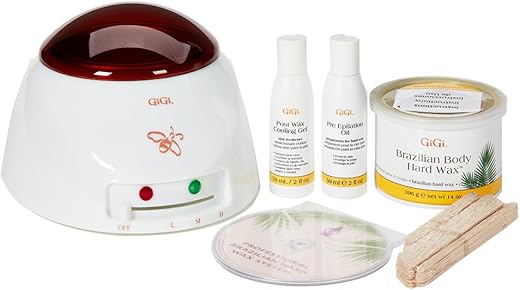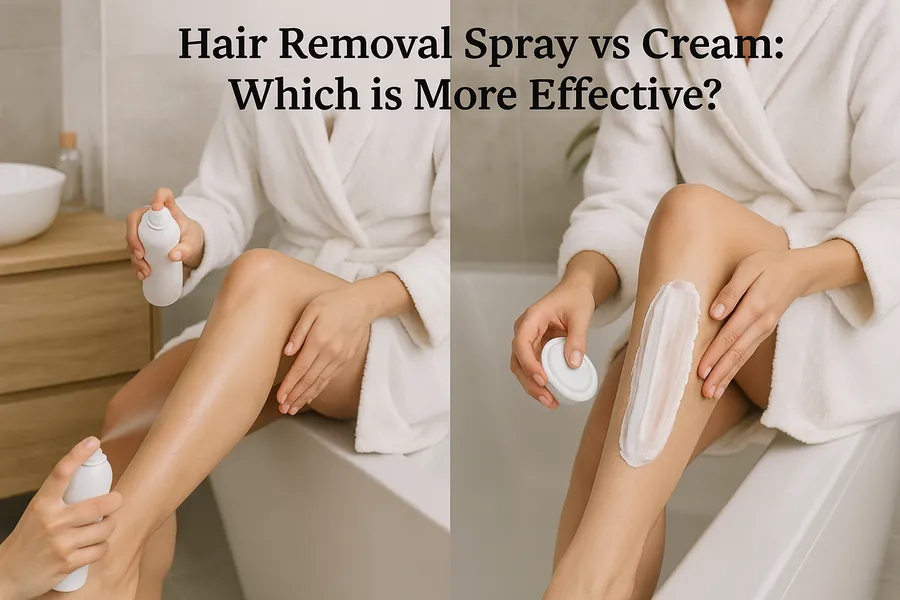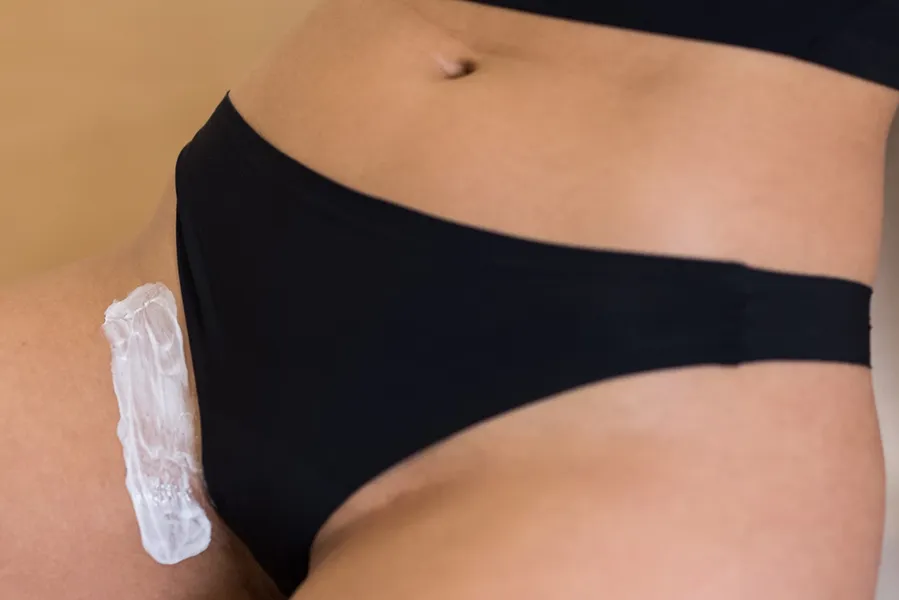Understanding Hair Removal Creams
Did you know that nearly 30% of people using hair removal creams experience skin irritation or unwanted side effects? It’s true! While these creams can be a quick and convenient solution for smooth skin, using them without caution can lead to some unpleasant surprises. If you’ve ever felt a burning sensation or redness after applying hair removal cream, you’re not alone. Many common mistakes can leave your skin feeling worse than before.
In this article, you’ll discover the 7 key mistakes to avoid when using hair removal creams. From the importance of performing a patch test to understanding the right product for your skin type, you’ll gain valuable insight. By learning to navigate these common pitfalls, you can enhance your hair removal experience, ensuring your skin stays soft and irritation-free. Let’s dive into the details and help you achieve the best results possible!
Not Performing a Patch Test
One of the biggest mistakes you can make when using hair removal cream is skipping the patch test. This simple step is crucial and can save you from potential skin irritation or allergic reactions.
Why You Should Patch Test
Hair removal creams contain various chemicals that can irritate your skin, especially if you have sensitive skin or allergies. Performing a patch test helps you determine how your skin will react to the product, protecting you from a larger area of irritation.
How to Conduct a Patch Test
Conducting a patch test is straightforward:
- Choose a Small Area: Pick a small, discreet section of skin—usually on your inner forearm or behind your ear works well.
- Apply the Cream: Follow the manufacturer’s instructions and apply a small amount on the selected area.
- Wait: Allow the cream to sit for the recommended time (usually 5 to 10 minutes).
- Rinse: Wash the area thoroughly with cool water to remove the product.
- Monitor: Observe the area for 24 hours for any signs of irritation, redness, or itching.
If you notice any adverse reactions, it’s best to avoid using that product altogether.
Real-Life Example
Consider the case of Emily, who was excited to try a new depilatory cream she saw online. She skipped the patch test, thinking it would save her time. Unfortunately, the product caused significant redness and discomfort on her legs, ruining her plans for a big event. A simple patch test could have helped her avoid this situation.
With this precaution in mind, you can confidently move forward in your hair removal journey. Next, we’ll explore the importance of adhering to the instructions printed on the product label for optimal results.
Ignoring the Instructions
When it comes to hair removal creams, reading and following the provided instructions is non-negotiable. Each product is formulated differently, which means the application time, technique, and even aftercare can vary significantly. Ignoring these directions can lead to everything from ineffective hair removal to unwanted skin irritation.
The Importance of Instructions
Not all hair removal creams are created equal. Some may require you to leave the product on for just a few minutes, while others might need more time for optimal results. If you accidentally exceed the suggested time, you might experience burning or redness. For instance, a cream like Nair may recommend keeping the product on for 3 to 10 minutes, depending on your hair type, but forgetting to set a timer could lead to trouble.
How to Read Instructions Effectively
- Take Your Time: Before using the cream, take a moment to carefully read through the entire instructions. This will prepare you for what to expect and how to use the product.
- Highlight Key Points: Write down essential details such as the maximum application time and any specific techniques for application (like using a spatula vs. your hands).
- Follow the Sequence: Make sure you understand the order of application, rinsing, and aftercare. Skipping a step can affect your results and cause irritation.
Real-World Anecdote
Take Amanda’s story: she was thrilled to try a new hair removal cream after seeing glowing reviews. Without thoroughly reading the instructions, she applied it generously and left it on longer than suggested. When she rinsed it off, she noticed redness and a burning sensation that lingered for hours. A quick glance at the instructions would have spared her the discomfort.
By heeding the instructions that come with your hair removal cream, you’ll pave the way for smoother, more successful outcomes. Speaking of which, up next, we’ll discuss the pitfalls of applying hair removal cream on sensitive areas, where special care is needed.
Applying on Sensitive Areas
Using hair removal cream on sensitive areas without caution is a common mistake that can lead to discomfort and irritation. Areas like the bikini line, underarms, and face have delicate skin that reacts differently to chemicals compared to the tougher skin on your legs or arms. Here’s how to navigate these sensitive regions with care.
Identify Sensitive Areas
Some of the most sensitive areas to avoid with hair removal creams include:
- Bikini Line: The skin here is thinner and more susceptible to irritation.
- Underarms: A hotbed for sweat and oils, making it prone to reactions.
- Face: Particularly the upper lip and chin, where skin is both delicate and often irritated by other products.
Best Practices for Application
Before applying hair removal cream to any sensitive area, consider these steps:
- Do a Patch Test: Ensure you regularly test the cream on a small area first even if you’ve used it before. The skin can change!
- Choose Specialized Formulas: Look for hair removal creams specifically designed for sensitive skin or delicate areas. Brands like Veet offer options formulated with soothing ingredients.
- Limit Exposure Time: Stick to the lower end of the recommended application time. For sensitive areas, five minutes can often be enough.
- Observe and React: If you feel any burning or discomfort during application, remove the cream immediately with cool water.
Alternatives to Hair Removal Creams
If you’re still hesitant about using hair removal creams on sensitive areas, consider alternatives like:
- Waxing: Though it involves pain, it can offer longer-lasting results with the right technique.
- Laser Hair Removal: A more permanent solution but requires professional consultation and treatment.
Real-Life Scenario
Take Marissa, for example. Excited to quickly remove hair from her bikini line for a weekend trip, she applied a standard hair removal cream without realizing its potential effects. She ended up with redness and irritation, forcing her to cancel her beach plans. It’s a painful reminder that sensitive areas deserve extra caution.
By paying special attention to these delicate regions, you can avoid unwanted discomfort and ensure a smoother hair removal experience. Up next, we’ll discuss the dangers of overusing hair removal cream and the importance of moderation for your skin’s health.
Overusing the Cream
When it comes to hair removal creams, more isn’t always better. Some users mistakenly believe that applying a thicker layer or using it more frequently will yield better results. Unfortunately, this misconception can lead to significant skin damage or irritation.
Why Overusing Is a No-Go
Hair removal creams work by breaking down the protein structure in hair, allowing it to be wiped away easily. However, this process also affects your skin. Using too much cream or applying it too often can cause:
- Chemical Burns: Over-exposure can damage the skin, leading to painful burns and peeling.
- Severe Irritation: Redness, itching, and swelling can result from the sensitive areas becoming overwhelmed by chemicals.
- Dry Skin: The formulation of hair removal creams can strip moisture from your skin, leading to dryness.
Recommended Application Frequency
To use hair removal cream safely and effectively, follow these guidelines:
- Stick to the Instructions: Most creams suggest using them once every few days or once a week. Check the manufacturer’s recommendations.
- Pay Attention to Your Skin’s Reaction: If your skin feels sensitive or irritated, wait longer before your next application. Sometimes, less is more.
How to Recognize When You’ve Overused
Being aware of your skin’s signals is crucial. Look for these signs of overuse:
- Persistent redness or swelling after application.
- Increased sensitivity or burning sensations.
- Peeling skin or rashes developing shortly after use.
Recognizing these symptoms early allows you to adjust your routine and avoid further harm.
Real-Life Example
Consider John, who read online that applying more cream helps achieve a smoother finish. He decided to double the amount during his next session and used it on back-to-back days, thinking he’d find success. Instead, he ended up with inflamed skin that took weeks to heal. A commitment to moderation could have spared him from painful recovery.
By using hair removal cream as directed and respecting your skin’s limits, you can achieve desired results without adverse effects. Next, we’ll explore the crucial step of moisturizing after using the cream, which is essential for keeping your skin healthy and hydrated.
Not Moisturizing After Application
Failing to moisturize after using hair removal cream can leave your skin dry and irritated. This step is often overlooked, yet it’s crucial for helping your skin recover and maintain its softness. So, how can you properly care for your skin post-application, and which moisturizing products are ideal?
The Importance of Moisturizing
After using hair removal creams, the chemicals can strip away not only hair but also natural oils from your skin, leading to dryness and potential irritation. It’s essential to replace what’s lost by applying a moisturizer, which can soothe the skin and support its recovery.
Best Practices for Post-Application Care
-
Wait Before Moisturizing: After you rinse off the hair removal cream, give your skin a few minutes to breathe. This allows any residual chemicals to dissipate before you apply a moisturizer.
-
Opt for Soothing Ingredients: Choose products that contain soothing agents like aloe vera, chamomile, or calendula. These ingredients have anti-inflammatory properties that can calm irritated skin.
-
Avoid Fragrance and Alcohol: When selecting your moisturizer, steer clear of those with heavy fragrances or alcohol, as these can further irritate freshly treated skin. Look for labels that say “sensitive skin” or “hypoallergenic.”
Recommended Products:
- Aveeno Daily Moisturizing Lotion: Rich in natural oatmeal, it’s great for soothing dry, irritated skin.
- Eucerin Advanced Repair Cream: Offers intense hydration and is free from fragrances.
- CeraVe Hydrating Cream: Contains essential ceramides to restore the skin barrier effectively.
A Quick Routine Example
After using a hair removal cream:
- Step 1: Rinse your skin thoroughly with lukewarm water.
- Step 2: Pat your skin dry; don’t rub!
- Step 3: Wait 5-10 minutes, then apply your chosen soothing moisturizer evenly across the treated area.
Real-Life Anecdote
Jessica made the mistake of skipping moisturizer after using depilatory cream. She experienced dryness and discomfort for days afterward, which could have been avoided with a simple post-care routine. A little extra care can go a long way in promoting skin health.
By ensuring you moisturize your skin after hair removal, you set the stage for smooth, healthy skin without the irritation that often accompanies hair removal methods. Up next, we’ll cover the risks associated with using expired or unopened products, helping you avoid even more potential pitfalls.
Using Expired or Unopened Products
When it comes to hair removal creams, using expired or improperly stored products can be a risky endeavor. Not only might these creams fail to deliver the results you expect, but they can also cause adverse reactions that compromise your skin’s health.
Checking Expiration Dates
Before applying any hair removal cream, take a moment to check the expiration date. Many brands clearly print this date on the packaging. If the product is past its expiration, it’s best to toss it. Expiration dates are there for a reason—they indicate when a product is likely to be at its most effective, both in terms of efficacy and safety. Here’s what to look for:
- Visual Indicators: If the cream appears discolored, separated, or has an unusual odor, it’s time to say goodbye, regardless of the date.
- Storage Conditions: Make sure you’ve kept your hair removal cream in a cool, dry place away from direct sunlight. Heat and moisture can compromise the product’s integrity over time.
Proper Storage Practices
For unopened products, be mindful of how you store them. Consider the following tips to ensure their longevity:
- Keep Away from Humidity: Bathrooms may seem like an obvious place for beauty items, but the high humidity can degrade various cosmetics. Instead, store your hair removal cream in a cabinet in a cooler room.
- Seal Tightly: Always ensure that the lid or closure is secure. This prevents air and moisture from getting in, which can alter the formulation.
Real-Life Example
Meet Sarah, who discovered an unopened tube of hair removal cream tucked away in her bathroom cabinet from two years ago. Thinking she’d save time, she used it without checking the date. The result? Severe irritation and disappointment. A simple check could have spared her the trouble.
By being vigilant about checking expiration dates and understanding proper storage techniques, you can help ensure that your hair removal experience is both safe and effective. Up next, we’ll delve into the importance of selecting the right products tailored to your skin type, which is crucial to achieve the best results while minimizing risks.
Choosing the Wrong Product for Your Skin Type
Not all hair removal creams are created equal. Selecting a product that doesn’t match your skin type can lead to irritation, discomfort, or even ineffective results. Understanding the relationship between your skin type and the formulation of hair removal creams is essential. Let’s explore how to make the right choice for your unique skin needs and hair texture.
Know Your Skin Type
Before diving into the world of hair removal creams, identify your skin type:
-
Sensitive Skin: If your skin often reacts with redness or irritation, you need a cream specially formulated for sensitivity. Look for phrases like “hypoallergenic” or “for sensitive skin” on the packaging. Brands such as Veet and Nair offer options specifically tailored for sensitive skin.
-
Normal to Oily Skin: A wider array of products is accessible for normal or oily skin. These formulations may contain additional oils or exfoliating ingredients to help manage oil production and keep the skin clean.
-
Dry Skin: If you have dry skin, look for creams that include moisturizing elements like shea butter or oils, which can hydrate the skin during and after the hair removal process. Products from Olay are excellent in this regard.
Consider Hair Texture
The type of hair you are removing also plays a role in product selection:
-
Fine Hair: If you’re dealing with fine hair, most creams will likely work effectively. Standard formulations from trusted brands should suffice.
-
Coarse Hair: For coarser hair, opt for stronger formulations that are explicitly marketed as being effective for coarse or thick hair. Products like Sally Hansen Hair Removal Cream for Coarse Hair are formulated to tackle stubborn strands.
Real-Life Scenario
Picture Mia, who has sensitive skin but mistakenly chose a general hair removal cream. The result? A painful rash that sidelined her from her skincare routine for weeks. Had she opted for a product catered to her skin’s sensitivity, she would have enjoyed smooth skin without the distress.
With the right hair removal cream that aligns with your skin type and hair texture, you’ll set yourself up for success, avoiding potential irritation and achieving the smooth results you desire. As we conclude this guide, remember that avoiding common pitfalls will pave the way for healthier, happier skin.
Avoiding Mistakes for Smooth Skin
By avoiding these seven mistakes, you can make your hair removal experience much smoother and more enjoyable. Keep these tips in mind, and you’ll be on your way to achieving a flawless and irritation-free finish.
Avoiding Mistakes for Smooth Skin
In conclusion, by steering clear of these seven common mistakes, you can elevate your hair removal experience with creams. Remember, your skin deserves the best care and attention. Always conduct a patch test to prevent unwanted reactions, and follow the product instructions closely to achieve optimal results.
Your journey to smooth, irritation-free skin is just a mindful application away. So, take the time to choose the right product for your skin type, keep up with moisturizing, and don’t overlook the importance of using fresh products. With these practices in mind, you’re set to enjoy effective hair removal. Embrace the process, pamper yourself, and step confidently into your smooth skin days ahead!


